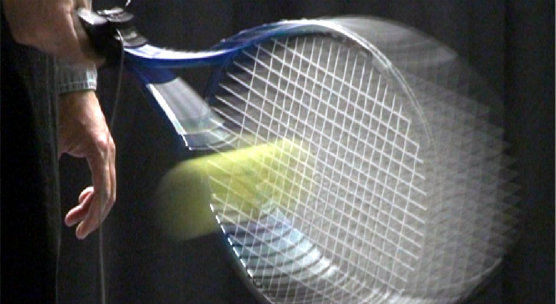Tennis elbow risk could be eased by reduced tension
Published On Sun 17 Apr 2016 by Grant Hill

`Tennis elbow’ is a condition that affects almost half of all tennis players in their lifetime. Now a study by researchers at the University of Dundee has revealed for the first time that reducing racquet string tension can reduce the risk of injury.
Professor Rami Abboud and his team at the University’s Institute of Motion Analysis and Research (IMAR) examined the forces placed on the elbow of tennis players while they executed simulated backhand strokes.
They found that increasing string tension placed greater load on the elbow, thereby increasing the risk of injury.
“Tennis elbow, or lateral epicondylitis, is a common injury for tennis players and one that, while it can appear relatively benign, can lead to significant pain long after people have stopped playing,” said Professor Abboud.
“We examined the stresses placed on the elbow that were exerted while playing simulated backhand shots, which have been shown to force greater pressure on the elbow than forehand shots.
“We found a clear relationship between varying string tension and the forces that were placed on the elbow. The tighter the strings then the greater loading we found on the elbow.
“There are a number of factors, which we are currently exploring, that can place strain on the elbow and contribute to lateral epicondylitis but our findings suggest that racquet tension is a significant one. In tennis players with a predilection for developing tennis elbow, reducing the racquet tension should be considered to help reduce the risk of injury.”
Twenty tennis players took part in the study, using identical racquets. Researchers took a series of measurements and used frame-by-frame video analysis to track the forces exerted in each shot.
The results of the study have been published by the journal Shoulder & Elbow.
For media enquiries contact:
Grant Hill
Press Officer
University of Dundee
Nethergate, Dundee, DD1 4HN
Tel: +44 (0)1382 384768
Mobile: 07854 953277
Email: g.hill@dundee.ac.uk